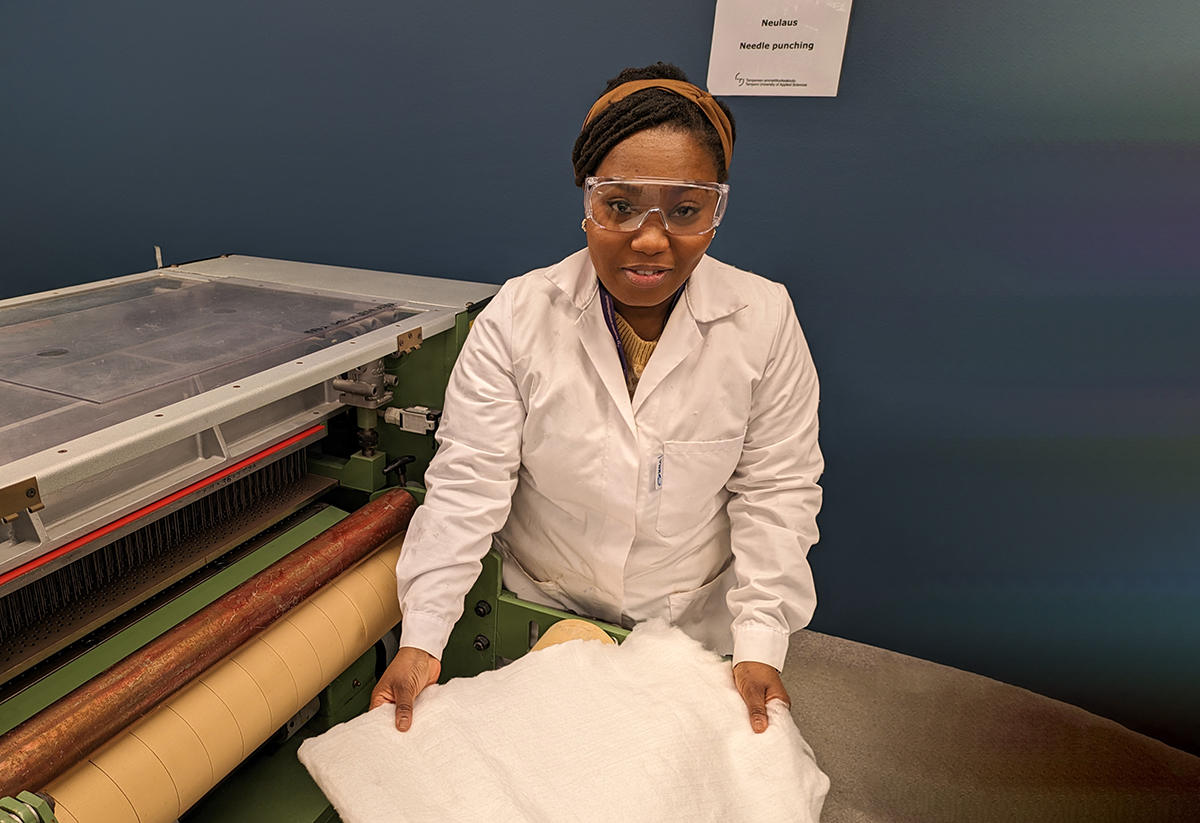The shift to biodegradable materials, as well as the use of recycled materials to promote circularity, is gradually reshaping the nonwoven sector. This blog post will discuss important sustainable fibres and polymers used in nonwovens, their benefits, and some notable examples of these materials.
Ecofriendly and Sustainable Fibers: The Future of Nonwovens
Natural Cellulose-based Fibers
Natural fibres are gaining popularity in the nonwoven industry due to their renewable source and biodegradability. Examples include cotton and bast fibres such as jute, flax, and hemp. Cotton is noted for its softness and breathability, while jute, flax, and hemp offer high strength and durability. The potential of bast fibres in nonwoven applications is increasingly recognised due to their minimal water and pesticide consumption during cultivation compared to cotton, making them a highly sustainable choice.
Cotton is commonly used in hygiene applications such as female hygiene products, wipes, and diapers. On the other hand, jute, flax, and hemp fibres are widely used in automotive interiors, sound insulation applications (such as ceiling panels, wall coverings, and room dividers), horticulture, and furniture applications (such as furniture and mattress fillings).
Man-made cellulosic fibres
Man-made cellulosic fibers are produced via the chemical processing of cellulose-based raw materials, such as wood pulp. They are a sustainable option due to their biodegradability and renewable sources. They are known for their soft feel, highly absorbent nature, and silk-like lustrous appearance, making them ideal for use in wipes, feminine hygiene products, wood dressing, and filters. Viscose and lyocell-type fibers are widely used, while several other technology routes are also emerging. Notable examples include Ioncell®, Norratex®, Biocelsol®, Spinnova®, Bio2™Textile fiber, and Kuura®.
Recycled Fibres
Recycled fibre refers to the fibre obtained from post-consumer and post-industrial waste sources. These fibers can be converted into nonwoven materials. The use of recycled fibres helps preserve resources, reduces landfill waste, and minimises the energy and resources needed for production. For instance, PET bottles can be mechanically recycled into rPET fibers, which can be utilised in nonwoven applications such as filter materials, roofing rolls, sound and thermal insulation, carpet felts, and automobile seat linings.
Another interesting source of recycled fibre is post-consumer textile fibres. Textile fibres can be collected, cleaned, shredded, and utilised in nonwoven materials. One of the most common nonwoven applications of textile-based recycled fibres is automobile acoustic and thermal insulation.
Biopolymers: The Game-Changers
Biopolymers have the potential to be game changers due to their thermoplastic nature, which enables them to be processed using techniques similar to traditional fossil-based polymers, as well as their biodegradability and renewable sources.
Polylactic acid (PLA) is the leading commercially available biopolymer. PLA can be obtained from plant sources such as corn, wheat and sugar cane. PLA has been employed in typical applications such as diapers, surgical masks and drapes, tea bags, air filters, etc. PLA is biodegradable under certain conditions, i.e., it can break down under certain conditions. Thus, the use of PLA can aid in reducing plastic pollution.
Another emerging biopolymer is PHAs (polyhydroxyalkanoates), derived from carbon-rich food crops and residues. PHAs are noted for their readily biodegradable nature in aerobic and anaerobic conditions, implying they can be broken down in various environments such as compost, soil and marine. This makes PHAs an attractive raw material option, especially in single-use applications such as disposable tableware and food packaging. Despite these attractive attributes, the use of PHAs has been limited due to the brittleness of the polymer during processing and degradation at high temperatures, high cost significantly higher than that of traditional fossil-based and other biodegradable polymers, low yield during production as well as odour issues which require the use of additives.
Other interesting biopolymers include partially biobased polymers such as polyethene terephthalate (bio-PET), polyethene (bio-PE), and polypropylene (bio-PP), which are still in their early commercial stages. These polymers typically contain roughly 25–30% bio-based content and 70–75% fossil-based petroleum-based polymers. While partially biobased polymers are not fully biodegradable due to their fossil-based composition, they have the potential to reduce dependence on fossil-based resources and may lower carbon footprint. Their biobased content is usually obtained from renewable plant-based materials such as agricultural waste, corn, sugar cane, wood, and vegetable oil residue.
Partially biobased polymers do not require process and technology changes as they can be processed using technologies similar to those of their fully fossil fuel-based conventional counterparts (PET, PE, and PP). Additionally, they can be recycled along with their fossil-based counterparts. Partially biobased polymers can be used in similar applications as traditional fossil-based polymers. However, their use is limited by their low availability and high costs compared to fossil-based materials.
Conclusion
Sustainable fibres and polymers provide an environmentally friendly alternative to fossil-based polymers and fibres used in nonwoven production. As technology and innovation continue to advance, it is expected that even more sustainable materials will emerge, and more technologies will be developed to improve the commercialization of these materials and reduce costs.
Although the use of sustainable fibres for nonwovens is a step in the right direction, consumer awareness, cost-effectiveness, and scalability are issues that still need to be tackled. Furthermore, raising consumer awareness about the advantages of sustainable nonwovens can boost the demand for these nonwoven products, thus promoting more research and investment in sustainable fibre technologies.
The writer Olamide Badara works as a researcher with the SUSTAFIT project, where she focuses on developing nonwovens from sustainable fibres.
Text: Olamide Badara
Picture of Olamide Badara: Maria Änkö





